Cyberpunk 2077’s lacking romance options show how triple-A is still terrible at relationships
Cyberpunk 2077 has remained a hot topic ever since its release at the end of 2020. The many disappointments it delivered after a considerable amount of hype resulted in one of the biggest flops in gaming history, and one which caused a landslide of collective gamer outrage. For once, at least some of it was justified, too; it was a historic, colossal hot mess.
The release had so many bugs it was removed from online stores, it saw countless refunds being given for digital purchases — and it continues to be patched even now, remaining in a state that is still unable to fulfil all the alluring promises developer CD Projekt Red had talked about when it was first announced. To say the game was released too soon is both obvious and an understatement — and this is something that will continue to haunt the company for the rest of its existence.
After all the goodwill built up with the excellent The Witcher III: Wild Hunt, Cyberpunk 2077 has put people on their guard for future CD Projekt Red titles. No longer is this the scrappy eastern European company who brought us janky but fun RPGs — now they’re a triple-A behemoth with a textbook inability to be up front and honest, and a seeming hesitance to make the right calls for the sake of player satisfaction.
I’ve been meaning to blow off some steam and express my own feelings of disappointment for Cyberpunk 2077 for a while now, but unlike the majority of players, I’m mostly upset with it for one specific reason. I want to talk about the issue of its romantic interests, both within the game and outside of it, because as a heterosexual female player, I’m becoming increasingly agitated when a high-profile, big-budget game offers romance options in a way that feels so lazy and unfair.
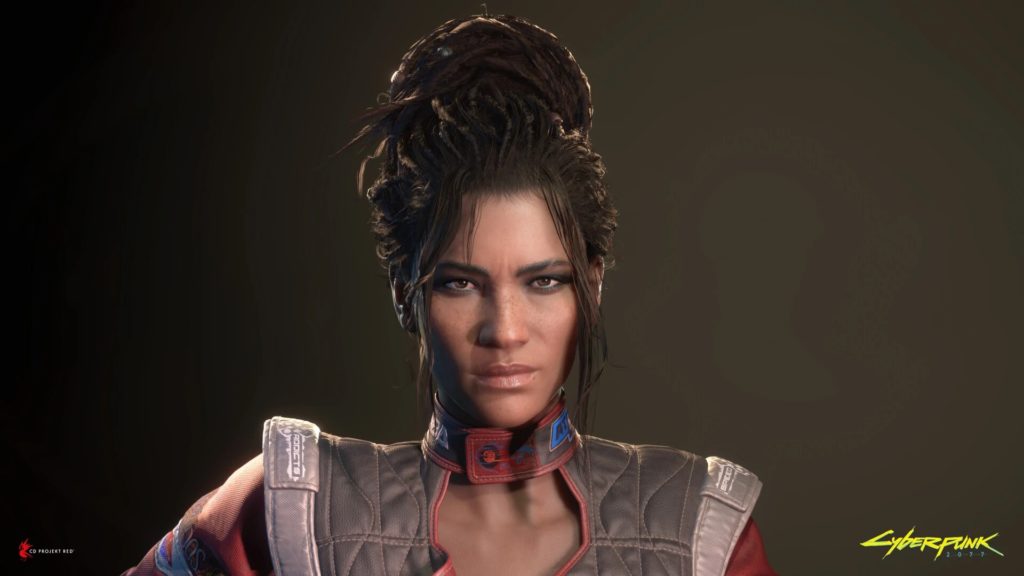
Let’s talk romance and Cyberpunk
As most of you will probably already know, I’m a sucker for romance and dating sims. If romance options are provided in pretty much any kind of game, I know I’m going to play it at some point for a single, simple reason: I love romance.
I love reliving the honeymoon phase with a character I have fallen head over heels for, and there’s no shame in admitting that. I love that feeling of butterflies in the stomach from seeing a relationship grow and romance blossoming. I love hearing the same cheesy lines and witnessing the same awkward realisations of feelings; seeing any sort of attempted wooing always makes a video game better, so far as my own personal preferences go.
Romance is, for me, the spice of life, and when it’s handled well it makes me appreciate a game even more. When the developers have put time and effort into making already likeable characters romanceable, I love it. I particularly appreciate it when we get the chance to see some enjoyable relationship progression through an additional storyline that comes along with the romance; we get the opportunity to see the love interest come across in a different light as they open up their vulnerabilities to the main character and develop in their own right.
Therefore, if a video game claims to offer potential lovers for anyone and everyone, they should be giving each one of those love interests the same amount of depth, attention and plotline relevancy. That’s not what Cyberpunk 2077 did.
If you’re going to offer romance options that supposedly cater to everyone’s preferences, commit to it! Upon the game’s ending, players shouldn’t be left feeling dissatisfied and poorly catered to with the romance options — especially when they were as excited as I was to explore said feature.
Let me lay out the main issue here. There are four love interests in Cyberpunk 2077. Judy is available for female homosexuals, River is available for straight women, Kerry is available for homosexual men, and Panam is available for straight men.
On paper, it sounds reasonable enough, even if just one love interest per gender/sexual preference combination is a little limited. It should mean there’s plenty of opportunity for us to enjoy brilliant romance stories and see these characters get fleshed out, right? Well, unfortunately the game doesn’t give all these characters the same amount of care and attention, meaning some gender/sexual orientation combos feel rather underbaked in terms of their romance options, the love interest’s character depth, the romantic plotline and the sense of relationship building.
Essentially, only the female love interests are well-developed in all these aspects.
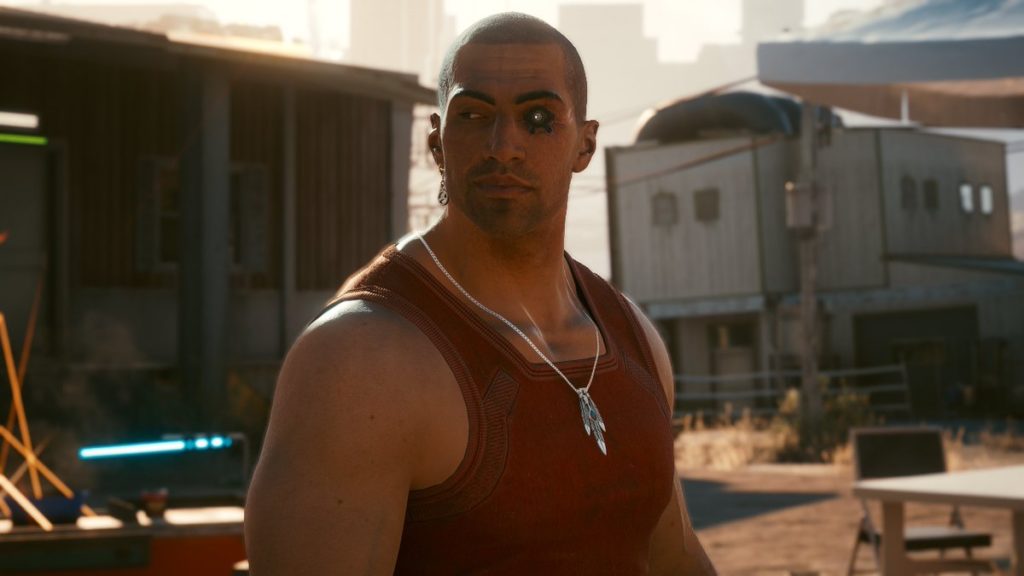
Judy, the homosexual female love interest, is undoubtedly the most fleshed out love interest in the game, being the one with the most narrative material and relevance to the main story.
When bonding with the romanceable characters, they each have their own unique missions that have to be completed to secure a relationship with them, and this is the first sign of such an imbalance between the love interests. Within the base game, Judy has nine missions, Kerry and Panam have seven each, and River? He has three. Just three. I’m sure you can imagine how quickly this means your relationship with him flips from one-off colleagues to becoming full-blown serious lovers.
Three out of the four love interests needed much more in the way of material to rival the superior storyline, character complexity and deep relationship Judy has with the main character. It makes it feel like Judy is the “canon” romance option for women, and Panam the “canon” option for men. The latter is particularly worth mentioning, since although he has less overall material than Judy, his romance story is leagues above the quality of the over love interests — it’s extremely well-written, rewarding and actually affects the endings.
All this means that the only romantic interests for homosexual men and heterosexual women simply do not have the same feeling of care and attention to detail in their storylines and missions.
It goes further, too: romancing either Judy or Panam allows you to stay in their apartment, committing to this serious relationship that is actually going down — while if you romance Kerry or River, you barely get a text here or there. Your interactions with them from thereon are extremely limited, ruining the illusion of the supposedly serious romantic relationship that you’ve become involved in.
But that’s not all. Other than a few lines perhaps hinting at an attraction between River and your character outside of his three (three!) character missions, the romance just feels like it comes out of nowhere. Its pacing is poorly handled, and it’s made all the worse when you find out that River is the only romanceable character who can actually be killed. Expendable, much?
On top of all that, with the many endings the game offers the players, only those who romance Panam have the choice to leave Night City with her. Every other love interest is left behind, or suffers an even worse fate filled with uncertainty, loss — or, at the very least, a breakup.
My point is that there appears to be no happy ending for those who pursue River. This is, of course, thematically appropriate storytelling in the rough and grim world of Night City — the game’s core message is about quite literally losing everything when you’re trying to make a name for yourself in the history books, after all, and it’s something I even complimented in the similarly dark and bleak setting of Red Embrace: Hollywood.
But the difference here is that Red Embrace: Hollywood was ruthless with all its romanceable options. Cyberpunk 2077 only provides the opportunity to enjoy a shred of happiness and hope to heterosexual male characters. It feels rather disappointing for everyone else; every other player of a different gender or sexual preference has to suffer, as do their love interests.
There could have been way better romance options in the game with some existing characters who already had better plotlines and relevance to the main story. Their romances would have felt more organic and doubtless would have been easier to write and implement. Takemura and Viktor are prime examples — particularly the latter; he’s the apple of my cybernetically-augmented Night City eye, really. Instead, we got the poorly paced, unrealistic River romance.
Romance options that say they cater to everyone, but actually don’t
This issue isn’t exclusive to Cyberpunk 2077 by any means; it’s a common problem with triple-A in general. Let’s look at a popular example: Mass Effect. Between 2007 and 2012, this otherwise beloved series of games left a lot to be desired in terms of romance options for anyone who wasn’t playing a heterosexual male Shepard.
The first game offered one female, one male and one bisexual option to romance. However, we already hit a stumbling block here: the bisexual option is female, meaning homosexual male characters are left out in the cold. Did the second game improve on this at all? Nope.
Mass Effect 2 saw barely any improvement in balance; it had three female, three male and an additional three women who were bisexual, once again giving way more options to certain sexual preferences than others — and none to homosexual men. Worse yet was the news that female character Jack was originally intended to be pansexual, but was made straight in the end in order to avoid further controversies with the notorious Fox News, which had previously lambasted the original game for its single female same-sex relationship.
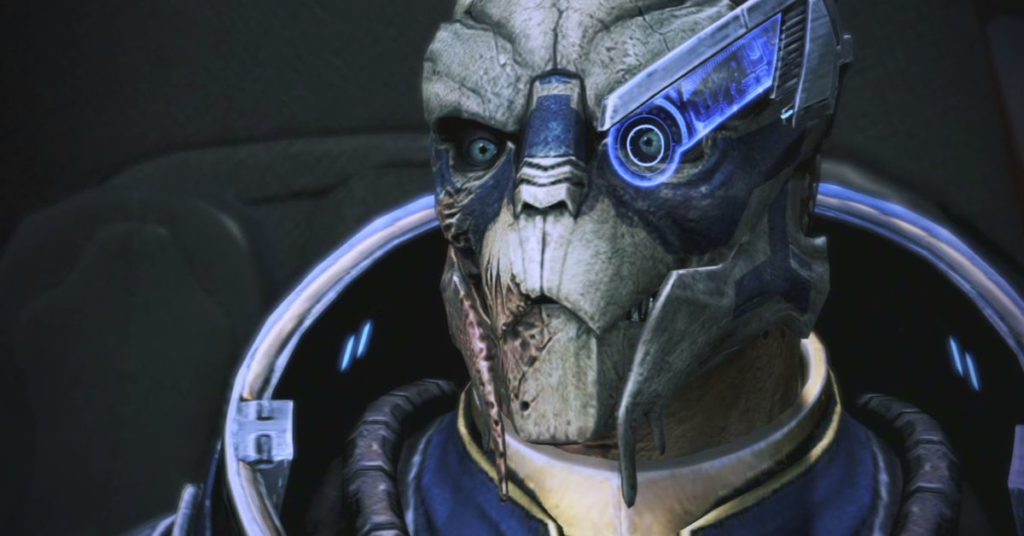
In Mass Effect 3, we finally see an improvement across the board — well, kind of. Male players have five romance options, finally including a homosexual male. However it’s also blatantly unbalanced – female Shepards now only have three options, two of which are only carried over if you’ve romanced either males from the previous game; the only available one to romance on a fresh file is a female. Meanwhile, male Sheps had three pre-existing romances unavailable unless they had got together in the previous games, leaving two new faces to romance instead: one male, one female.
The bisexual options finally included a male, as well as three females. On top of that, the game’s DLC offered three more romanceable characters: a returning female, and two new ones for women only. The clear favouritism in who the game caters to couldn’t be any more apparent, and this was back in 2012. Cyberpunk 2077 still managed to fumble this in 2020. So are there any high-profile, big-budget games out there that do offer solid romance options for straight women?
Making the comparisons
What we can see from the examples we’ve explored so far is that creating a smaller, more condensed romance pool provides better potential to satisfy players; with fewer characters, it’s likely easier for developers to put the same amount of care and effort into representing those relationships. But it’s all a balancing act — one which triple-A devs still aren’t getting right.
I’m not mad that Cyberpunk 2077 didn’t offer a bisexual option; my issue is that even with such a small pool of love interests, the game features such an obvious imbalance in favour of certain characters and, by extension, gender/sexual orientation combinations. Certain characters feel more “canonical” than others, resulting in the others feeling like their character depth is compromised.
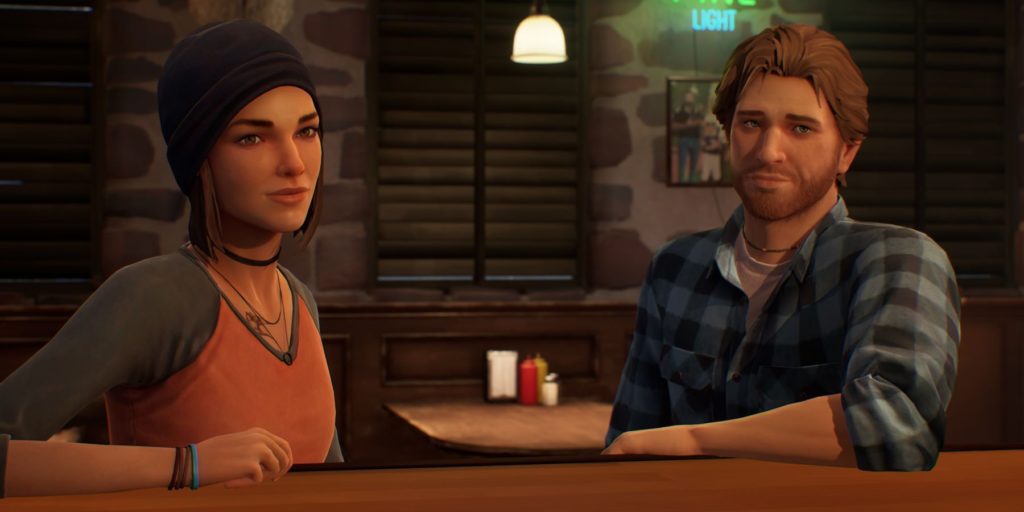
Let’s look at another example. Despite my enjoyment of Life is Strange: True Colors, I was a little frustrated at the romance options with the characters Ryan or Steph, as there’s a clear imbalance in their places as significant characters in the story. Ryan has greater ties to the main premise of the game, making for a much more impactful storyline if you choose to romance him; Steph, meanwhile, largely feels like the developers throwing a bone to those who want to see a lesbian couple.
It’s come a long way from the first Life is Strange, at least, where players supposedly have the choice of picking a male or female love interest for Max — with the catch being that everyone dies if you choose the female one. You know, the “canonical” one. Therefore, to get what is indisputably the best ending, since it comes across as the morally correct path to go down, the female love interest has to die instead. (Chloe is well annoying, though – Ed.) Own up: who even remembered that Warren, a side character with zero relevance to the main plot, was the other “correct” love interest?
The frustrating thing is that there are plenty of games out there that provide excellent balance in their options for love interests. In the indie sphere, for example, the laid-back, chilled-out mail delivery simulator Lake features two love interests, Robert and Angie, who are just as appealing as one another. It’s a cosy and relaxing experience, albeit short — both romances could have probably been more memorable if there was just more of both of them.
But what it did achieve is to respect both options as being as valid as one another. Neither came out on top in any way; both are legitimately lovely characters with solid arcs, and neither outshines the other.
Probably the best example of this for me is The Walking Dead: The Final Season. Clementine is bisexual, and as such the game allows players to pursue either a homosexual or heterosexual relationship — or, indeed, none at all. it all makes sense, and it’s pulled off really, really well.
Deciding between romancing either Louis or Violet is a legitimately difficult choice since they’re both great characters; both pairings build the relationship up into something far greater as the lovers develop both individually and as a unit. And, of course, this being The Walking Dead, there are stakes for choosing who to romance. There are consequences and lasting effects. But most importantly, they both deserve and complement Clementine — equally.
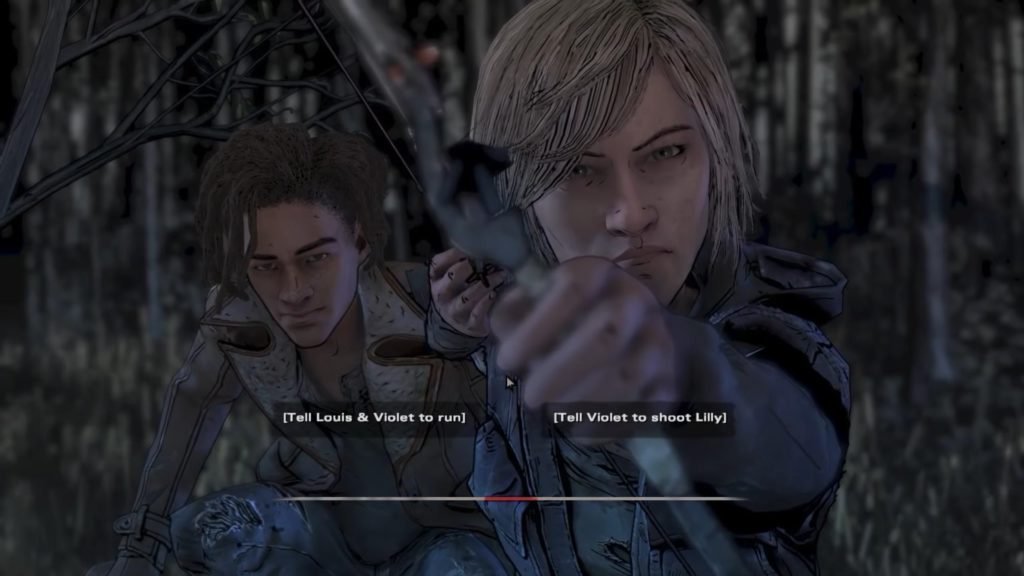
Here’s to better romance options for all of us
So what’s the solution? Well, while it might seem like an easy way out, making everyone bisexual doesn’t seem optimal; it’s unlikely even in Cyberpunk 2077’s futuristic, punk setting would see every living person being bisexual. That’s just not how preferences and sexual orientations work.
Instead, developers should be fleshing out the characters that game worlds already have. Make the romances believable and ensure they all have the same amount of depth and story relevance rather than leaving one feel obviously “canon” while the others feel half-arsed.
In the end, it’s a shame that big-budget games offering romanceable options fail to deliver a satisfactory experience for everyone. While these games are by no means entirely focused on their relationship aspects, unlike dedicated dating sims or relationship-centric visual novels, if a game offers a relationship mechanic, I expect it to deliver in even the smallest of ways.
Admittedly, heterosexual women still have it better than those interested in same-sex relationships. Fire Emblem: Three Houses requires paid DLC for Yuri, the most popular male homosexual romance option, to be available. And even then, Jeritza, the other DLC character available to homosexual male characters, is locked behind a single route. And the base game only includes the very feminine Linhardt as an option, who won’t be to everyone’s taste. At least it’s not as bad as the Dragon Age series.
Sure, you could say that I shouldn’t be playing these games for their romance options — but if those options are there, players should be able to enjoy them to the fullest, regardless of who they are. Cyberpunk 2077 in particular set some expectations that simply weren’t met — and thus I’m still keen to see more romance options in video games, just on a more fair and unbiased basis.
My good guy hunk with a heart of gold and a drive for justice deserved way better, but alas, I guess it’s time for me to play Cyberbang 2069 to fill the hole in my heart.
Join The Discussion
Rice Digital Discord
Rice Digital Twitter
Rice Digital Facebook
Or write us a letter for the Rice Digital Friday Letters Page by clicking here!
Disclosure: Some links in this article may be affiliate links, which means we may earn a small commission if you make a purchase after clicking on them. This is at no additional cost to you and helps support Rice Digital!
- Sigh of the Abyss: Shadow Bonds – Prologue Review - October 7, 2023
- Is She The Wolf? is wickedly addicting TV - October 6, 2023
- The steady consumption of Slow Damage - October 5, 2023






